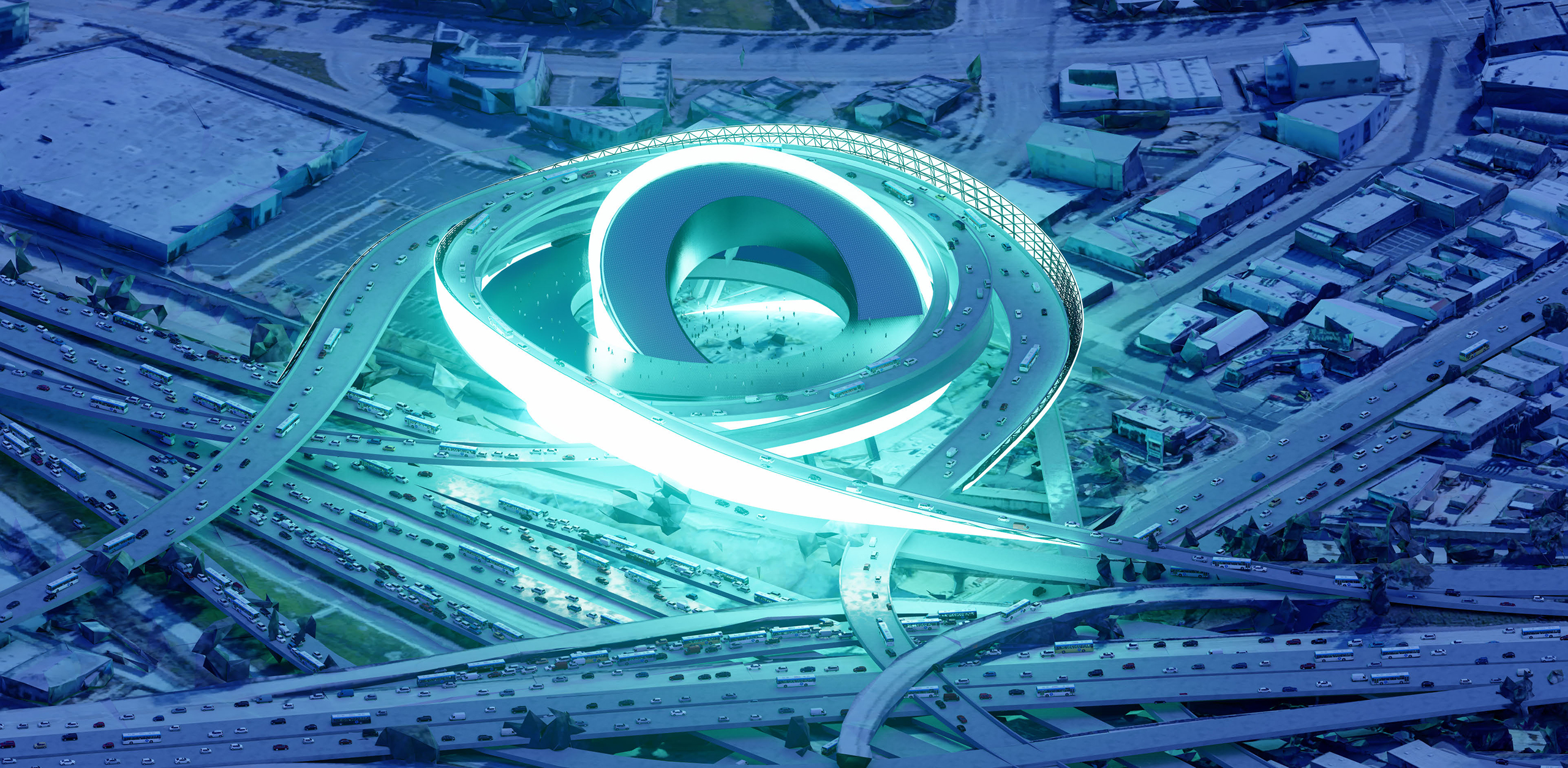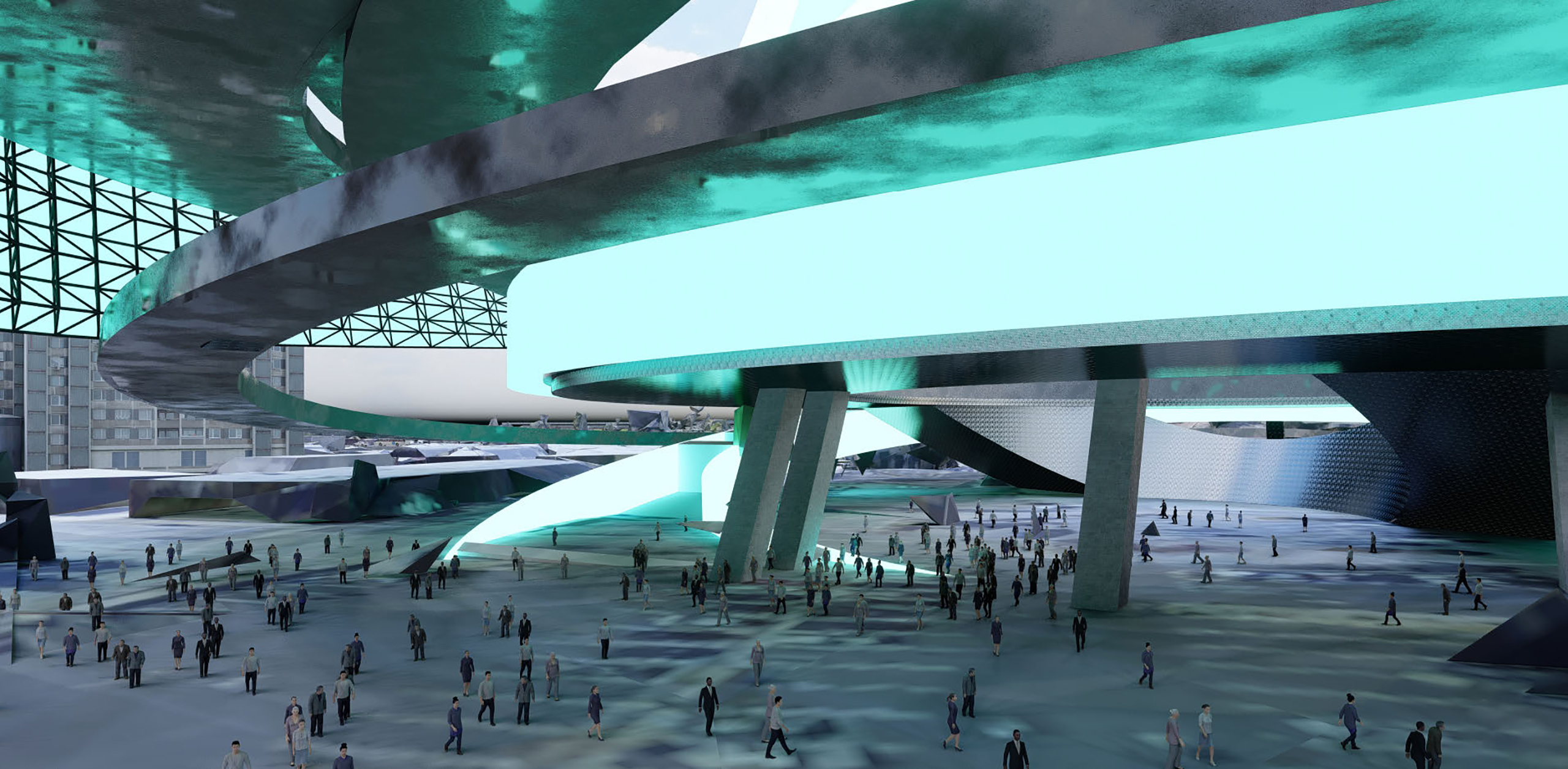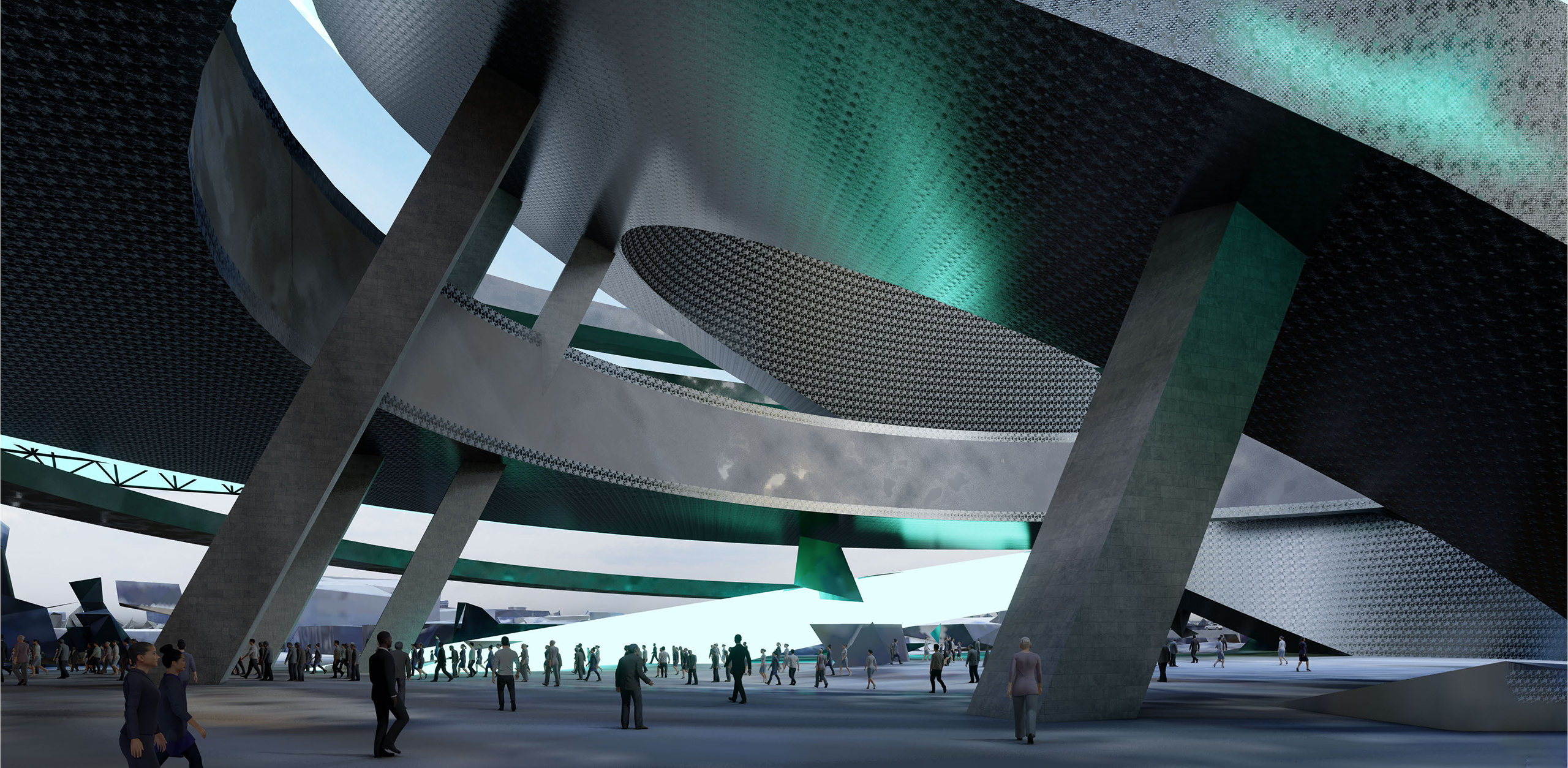The pandemic has shown that art cannot survive on streaming alone; it requires new physical architectures, infrastructures, and more flexible organizational structures. The historic boundary between artists and audiences has become a permeable membrane, with audiences actively participating in the storytelling and creating multiple possible endings. In this future, even overlooked spaces like the unused land around highway intersections can become stages. These stages utilize existing infrastructure for accessibility and stability, with screens reflecting performances to the surrounding public. These screens could be fabric on a space frame, high-tech displays, or projections visible from cars, boats, or bikes, making performance an omnipresent and accessible experience.
Super Stage
Art and performance are essential human rights that now thrive in a variety of settings, from streets and cultural festivals to virtual platforms, reshaping the traditional boundaries between artists and audiences. The future of performance embraces new physical and digital spaces, using everything from overlooked highway intersections to virtual environments, making art more accessible and interactive in everyday life.






